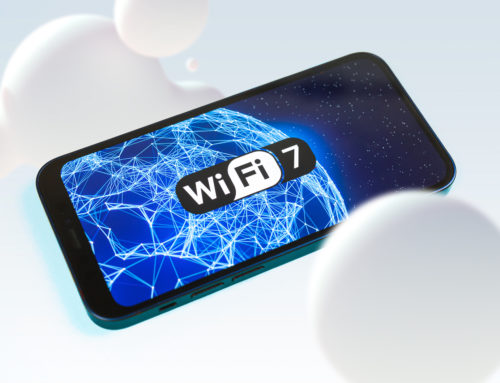Wi-Fi 7, also known as IEEE 802.11be, is the next generation of wireless networking technology that promises to revolutionise the way we connect to the internet and other devices. Designed to overcome the limitations of its predecessors, Wi-Fi 7 introduces significant improvements in speed, capacity, efficiency, latency and security.
Wi-Fi 7 offers much faster data speeds than previous generations. Theoretical speeds can reach up to 46 Gbps, which is a significant jump from the 9.6 Gbps of Wi-Fi 6. It is also designed to handle a greater number of connected devices without compromising performance. This is especially important in densely populated environments such as offices, stadiums and homes with multiple connected devices.
Features
6 GHz frequency
- Spectrum expansion: Wi-Fi 7 uses the 6 GHz band in addition to the traditional 2.4 GHz and 5 GHz bands. The 6 GHz band offers more non-overlapping channels, reducing interference and increasing network capacity.
- Benefits: with fewer devices currently operating at 6 GHz, there is less congestion, resulting in faster and more stable connections. It is ideal for applications requiring high bandwidth and low latency.

Extreme speeds
- Increased bandwidth: Wi-Fi 7 supports channels up to 320 MHz, double what Wi-Fi 6 can offer. This allows more data to be transmitted simultaneously.
- 4K-QAM: By using 4K-QAM modulation, Wi-Fi 7 can send more bits per signal symbol, enabling transmission speeds 20% higher than those using 1024-QAM.
- 46 Gbps: Theoretical speeds can reach up to 46 Gbps, depending on configuration and environment, which is suitable for bandwidth-intensive tasks such as 8K streaming and virtual/augmented reality applications.
Spatial streams
- Increase in the number of spatial streams: Wi-Fi 7 can support up to 16 spatial streams, compared to the 8 spatial streams supported by Wi-Fi 6. Each spatial stream allows simultaneous data transmission over multiple antennas.
- Improved capacity and speed: with more spatial streams, the network can handle more data simultaneously, improving both the speed and the overall capacity of the network.

Multi-Link Operation (MLO)
- Multi-link operation: MLO allows devices to use multiple bands (2.4 GHz, 5 GHz and 6 GHz) simultaneously. This not only increases speed, but also improves reliability and reduces latency by load balancing between different bands.
- Latency and capacity benefits: by being able to use multiple bands at the same time, the likelihood of congestion in any specific band is reduced, improving connection quality and reducing response time.

Preamble Puncturing
- Spectrum optimisation: Preamble Puncturing allows Wi-Fi 7 to use parts of the spectrum that previously could not be used due to interference or other restrictions.
- Improved channel efficiency: this technique allows “puncturing” parts of the preamble (the start signal of a data packet) to avoid interference, optimising the use of the available spectrum and improving the overall efficiency of the network.

Low latency
- Designed for real-time applications: Wi-Fi 7 is optimised for applications requiring low latency, such as online gaming, virtual/augmented reality and video conferencing.
- Delay reduction: technologies such as MLO and improved traffic management help to significantly reduce latency, providing a smoother and more responsive user experience.
Security
- Improved security protocols: Wi-Fi 7 introduces improved security protocols to protect against new threats. This includes upgrades to WPA3 and possible future iterations.
- Adaptive security: with the ability to use multiple bands simultaneously, Wi-Fi 7 can implement adaptive security measures that dynamically adjust security settings based on device and network needs.
Future applications
8K streaming and more
The extreme speeds and low latency of Wi-Fi 7 will enable seamless HD video streaming, enhancing the home entertainment experience.
Virtual and augmented reality
Improvements in latency and capacity will enable more immersive and responsive virtual and augmented reality applications.
Internet of Things (IoT)
Wi-Fi 7 will improve the connectivity and efficiency of IoT devices, supporting a greater number of simultaneously connected devices.
Business networks
Businesses will benefit from increased capacity and reliability for critical applications, improving productivity and operational efficiency.
Wi-Fi 7 represents a significant advancement in wireless networking technology, offering faster speeds, improved efficiency, lower latency and enhanced security. These enhancements are designed to support modern and future applications, providing a superior user experience in a wide range of environments and uses.





